The Wildflower Field
Restoration project
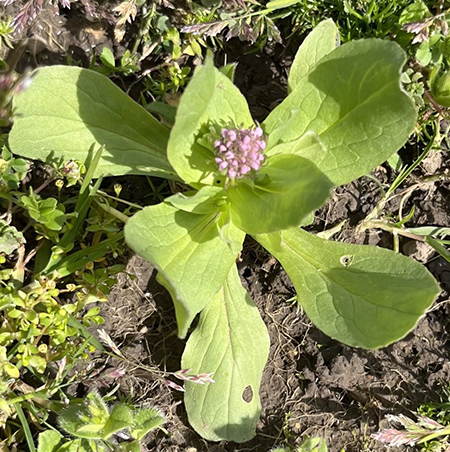
April 3 2022
I found the first wild flower bloom - Sea Blush. Right now it is small but the pink flower keeps growing taller. Also pretty close to blooming are Blue Eyed Mary and Fragrant Popcorn flowers. With all the rain and my original seeds washing away I see Popcorn flowers all over the field, very exciting for me.
I have also been buzzed by several bees but haven't been fast enough to get pictures. I see more sunny days in the weather forecast so everything should start growing as well as more bees and early butterflies showing soon!
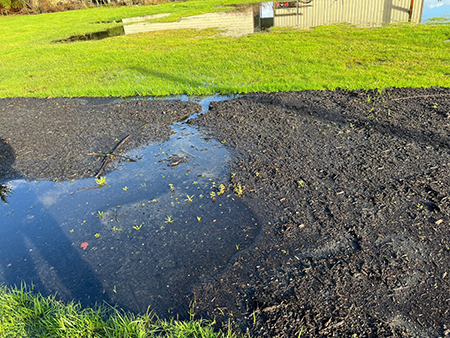
March 2022
It has been a wet brutal winter this year. I now have the beginnings of a creek running through my wildflower patch. A lot of the seedlings have washed away but there are still some remaining. A little more overseeding and I have the beginnings of my first strip of wildflowers.
The flower seedlings I see here are Farewell to Spring, Popcorn Flowers and Douglas or White Meadowfoam. Further down towards the southern end there are Globe Gilia, Big Leaf Lupine, Blue Eyed Mary, maybe Henderson Checkermallow, Yarrow - lots of Yarrow, Sneezeweed, Seablush and some I can't identify as they are new. Then of course there are quite a few weeds to keep me busy.
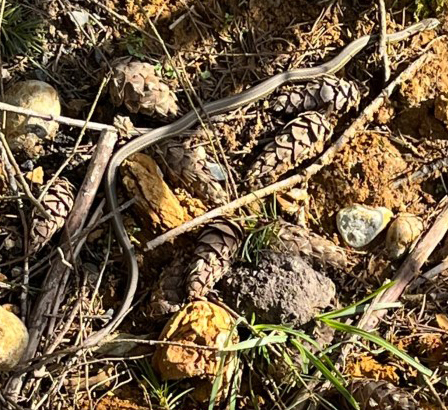
March 2022
Found my first Western Terrestrial Garter snake of the year. It is about 2' long so it is already out of hibernation.
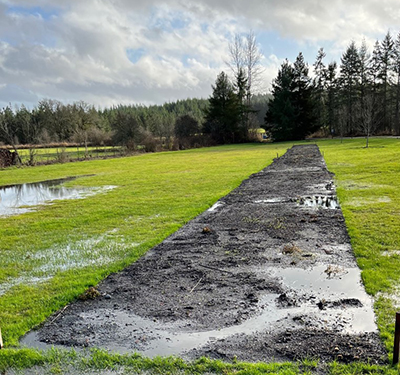
January 2022
The entire county is having flooding issues with the excessive rainfall which occurred right after snow. The wildflower strip is showing areas where it has washed away but the majority of the strip is still intact. You can see even the grass area has standing water.
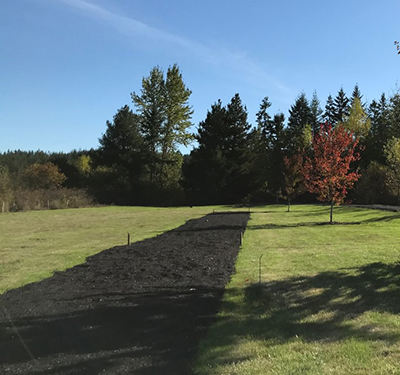
October 2021
Rains have started and wildflowers seeds sowed. I still need a layer of mulch but not much of a break in the rain so I will hope for the best and probably throw more seeds out in Spring.
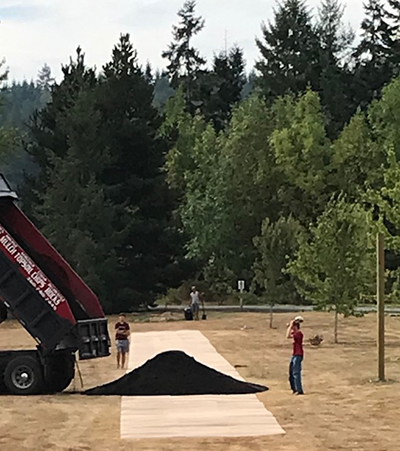
September 2021
Second attempt at wildflower strip - multiple layers of cardboard covered in 4" layer of compacted dirt. I expanded the area to 12' x 230'. If the entire strip does not take at least I am hoping to kill the grass of underneath.
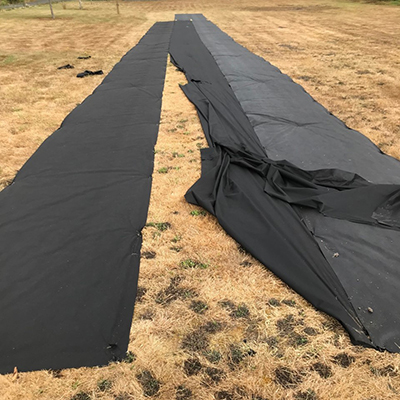
September 2021
Tarp method does not work for the Coyote and he let me know. After this destruction I am going to use a different method. One good thing the Coyote did was let me see the weed block material is not working anyway.
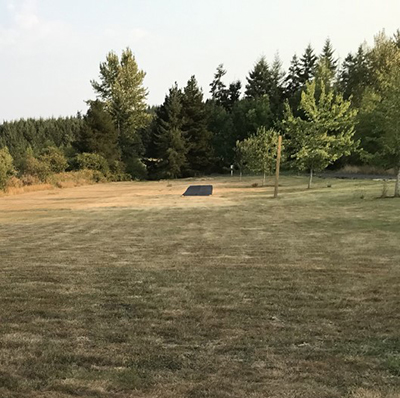
August 2021
This summer has been unseasonally dry and we had an extreme 110 degree week. The field is very dry but I'm hoping it is killing off some of the non-native grass. I am working on my first wildflower strip, following Northwest Meadowscapes newsletter by covering with weed barrier. I couldn't find any black plastic tarp so hope this works. First attempt is 12' x 100' strip.
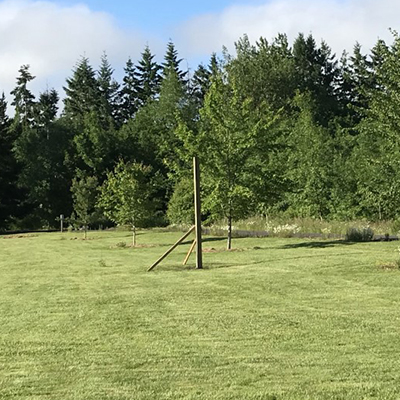
June 2021
I now have an Owl Perch!
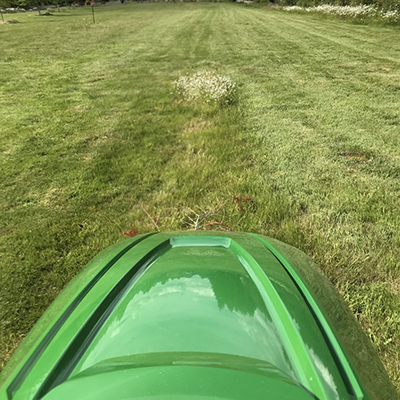
Spring 2021
I threw out more native wildflower seeds as I believe the majority of the fall seeds have washed away. I engaged Sound Native Plants to come give an evaluation on what changes to make. They suggested adding more bush/tree variety for wildlife. Shore Pine where I lost the tree, Pacific Ninebark, more Red Elderberry, Sitka Willow, Black Gooseberry, more Black Twinberry.
I found some Popcorn flowers in the field – not sure if these were already here or were from the seed I threw out. I will mow around them. I moved my mow line to the east out 5 feet to encourage rose bushes to grow as suggested by SNP. I am encouraged to see Large Leaved Avens, one set of field buttercup, one Lupine and perhaps blue-eyed grass in the newly non-mowed section. Self-heal bushes are scattered around the field so I’ll try not to mow as many as I can. There is also some native grasses but I need help identifying them.
The daisy are now on the invasive species listing but left them to grow this year until I get other flowers established. I might have left too many!
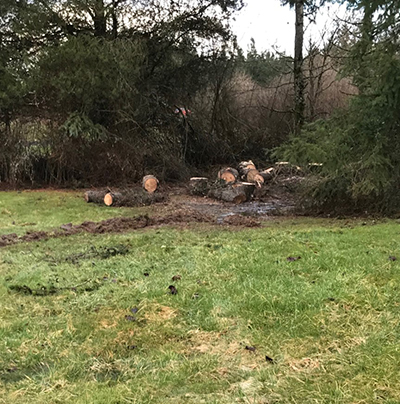
Winter 2020/2021
There is more heavy rain here than I had anticipated! I hope all my seeds have not washed away. I lost one of the pine trees that blocked the main road noise at the south end. Not something anticipated for sure.

November 2020
After more intense investigation I have found I have more noxious invasive plants than originally thought! Bull thistle, Tansy Ragwort and field dandelion is everywhere. There are also pockets of Reed Canary Grass, Himalayan Blackberry and Canadian thistle. As neighbors have cattle I will focus on the Tansy Ragwort, hoping to eliminate by hand removal. I was able to pull a large section at the north end this fall.
As my move in date was so late in the fall, I did not have any time to get any wildflower starts in the field. I plan to use some of the raised flower beds to get some flowers started this fall and will plant indoor starts. I also covered a 15’ x 10’ section of grass next to the raised flower beds with cardboard and a thick layer of dirt. I threw some seeds out on the dirt, hopefully some will grow.
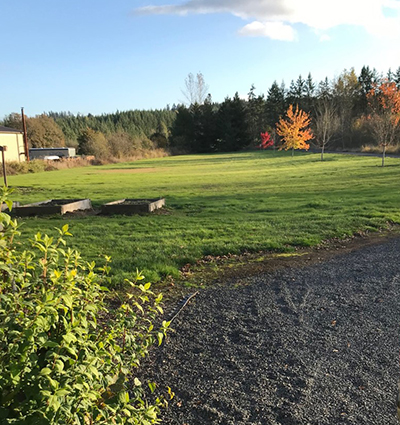
September 2020
The field on move in is mostly taken over by grass.
The field consists of approximately 2 acres in a somewhat V shape. On move in the base of the V is towards the south bordered by a couple Pine and evergreen trees. The west side is the private road easement while the east side has been mowed within a foot of the barbed wire fence line. The north side consists of a seasonal pond and a large grass area next to several raised garden beds.
The majority of trees and shrubs on the property are Nootka rose, Pea fruit rose, Baldhip rose, Oregon Ash, Cascara, Red Elderberry, Mock orange, Serviceberry, Oso Berry, Cottonwood, blackberry and Snowberry. The field looks like originally it was native grasses and some wildflowers however non-native grass has taken over. My plans are to increase the hedge row to the east with a larger variety of native plants and make the middle of the field native wildflowers and native grasses. Bring on the butterflies and bees! Hopefully I will be able to achieve this without too many issues from neighbors who are not into native restoration projects.
To the west side of the road easement is 1-1/2 acres seasonal wetland I hope to restore – look for another blog posting on that soon!